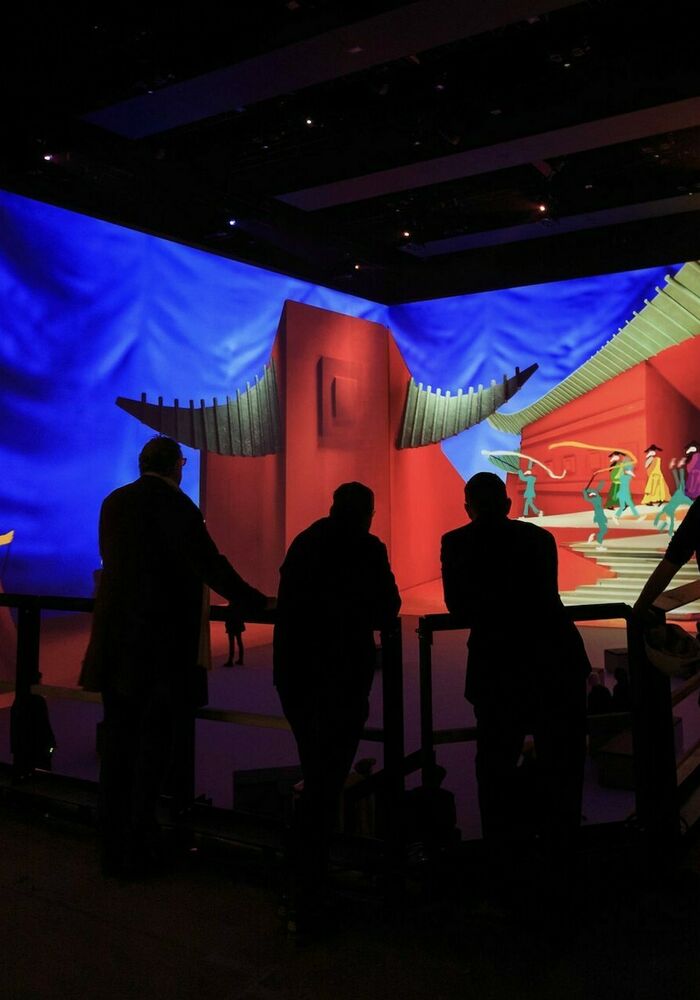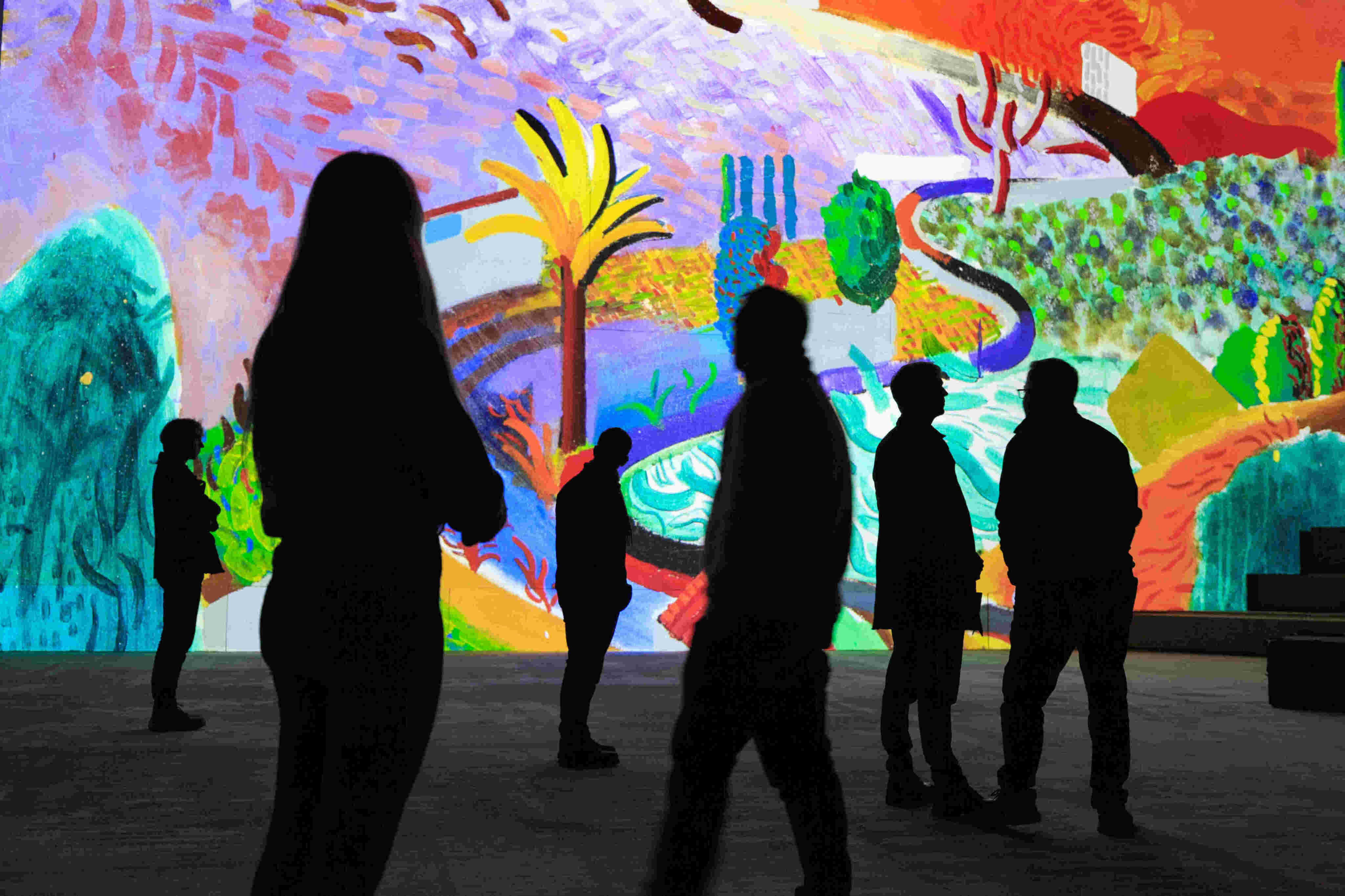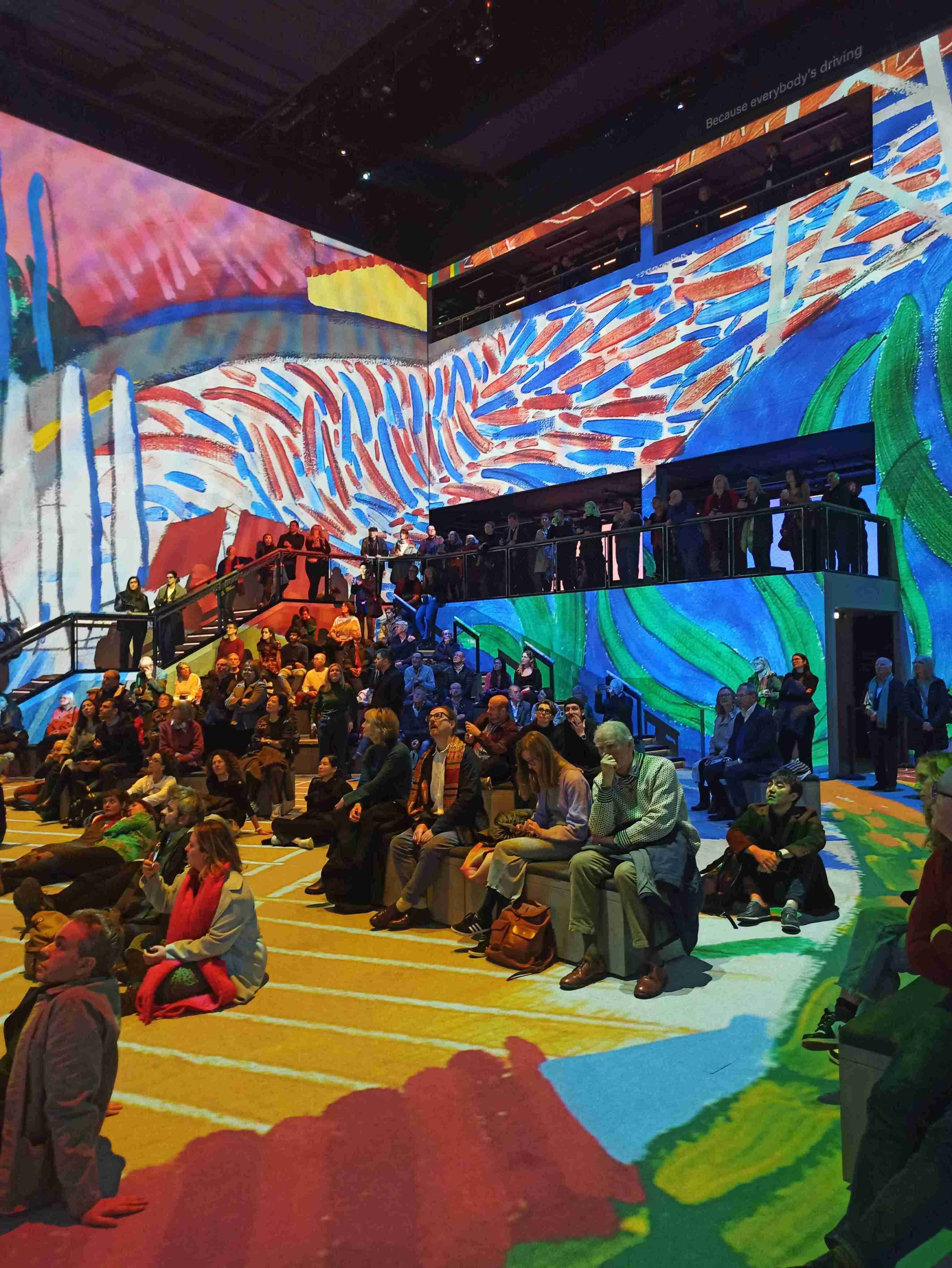Last month, Lightroom, a new exhibition space in London, opened with an innovative immersive AV exhibit showcasing the work of acclaimed artist David Hockney. Headliner caught up with some of the project’s key players to find out more about the creative avenues the space is set to open up and why the Holoplot sound system at its core can ‘do things no other system can…’
The term ‘immersive’ has been bandied about a lot in recent years. From Atmos mixes of studio recordings and surround sound effects in live music and theatre shows, to cinema multiplexes that can shunt seats around while flicking water at you in the name of creating a more enjoyable experience - it tends to be applied to just about anything that doesn’t sit neatly under the stereo tag. But in the world of experiential events, visual brands and pro audio specialists appear to be exploring collaborative opportunities with greater vigour than ever before in the pursuit of projects that are, indeed, immersive.
In the world of live music, audio and visual providers have a tendency to stand in opposition to one another, with those on the audio side feeling increasingly maligned by productions seeking ever-bolder visual elements. Yet, away from the live arena at least, there seems to be a coming together of sorts. Rather than competing for attention, they are finding new, mutually beneficial ways of working thanks in part to leaps in innovation by companies such as Berlin-based pro audio company HOLOPLOT.
One of the purest distillations of this ethos can be experienced within the simple, no frills setting of London’s Lightroom and its opening collaboration with much loved British painter and photographer David Hockney, entitled BIGGER AND CLOSER not smaller and further away. From the minimalist nature of its box room shell to the subtle application of its extraordinarily powerful Holoplot sound system, it is a consummate example of how technology can be used to complement an artist’s vision. Visuals can be projected onto its four walls and sound can be moved seamlessly around the room via the strategic deployment of just two hidden HOLOPLOT Matrix Arrays and some reflective surfaces.
The effect is mesmeric. As Headliner enters the space, paintings from Hockney’s 1985 Paint The Stage project have become animated, gliding across the walls with something unique to see on each surface. It’s all understatedly accompanied by an original soundtrack from Nico Muhly that is frequently punctuated by the voice of Hockney himself, sharing the stories behind his work and offering unique insights into his artistry.
Playing out over a 50-minute loop, different works from across his career are brought to life in a variety of different ways. Some are almost disorienting, with bright imagery flashing at pace in every direction as the score undulates in tandem. Others are profound in their simplicity, for instance when Hockney’s voice is quietly giving context to slowly materialising static images of various pieces of work. The resulting experience is like seeing splashes of imagination take audio-visual form before your eyes and ears.
While the visual component of the show is plain to see, the sophisticated nature of Lightroom’s audio element, given that the technology and speakers are literally invisible in the room, requires some explanation.
“We knew audio was going to be really important,” says Lightroom CEO Richard Slaney. “The Holoplot system is amazing because it allows us to deal with a really challenging room, and the creative possibilities are endless. We’ve used a lot of reflection around the room, particularly with Nico’s soundtrack. He gave us around 24 original stems and we placed those around the room through different reflectors, so that it encompasses you in the space. It’s incredible.”





